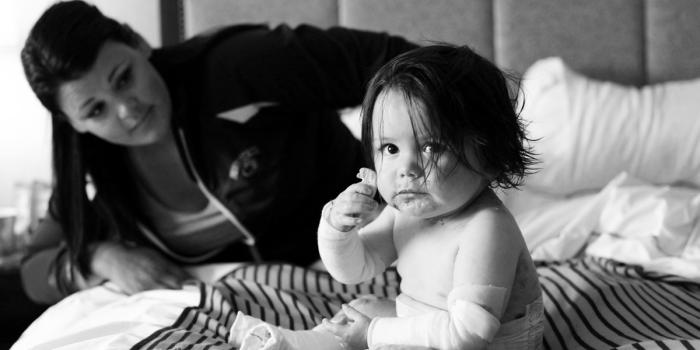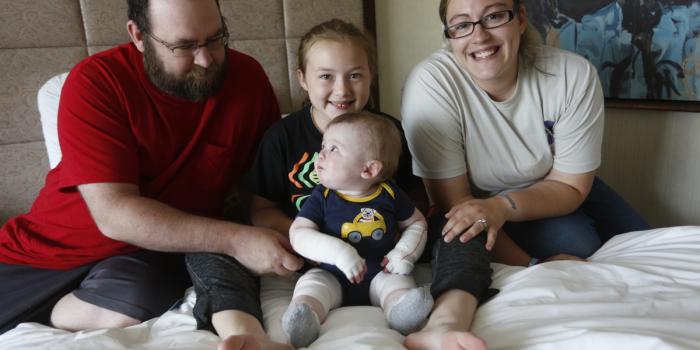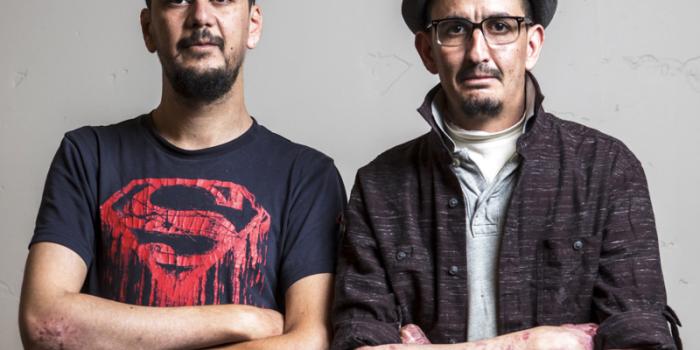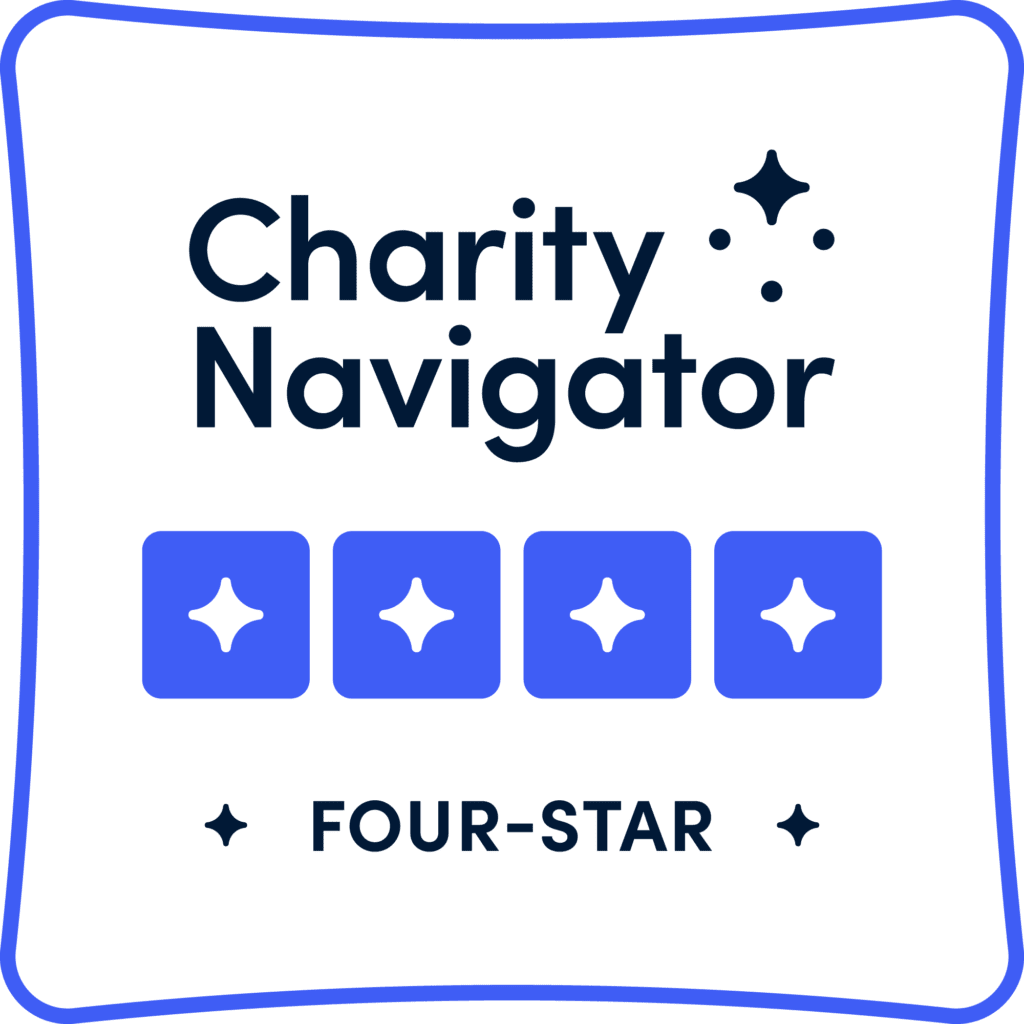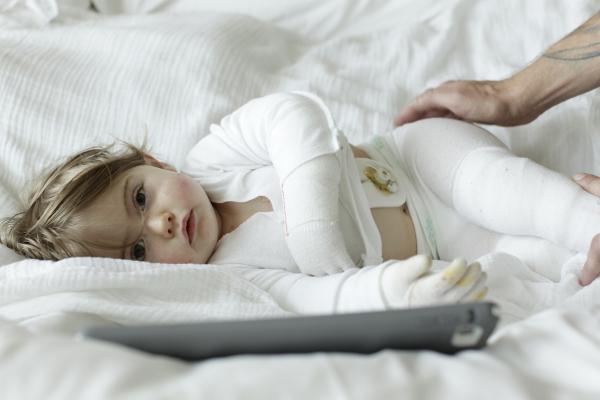
*CLICK HERE TO DOWNLOAD A PDF VERSION OF THIS PAGE.
To all new parents, here are some helpful hints and detailed medical information to assist you in caring for your newborn with Epidermolysis Bullosa (EB).
Please contact debra of America's National Office with further questions or concerns. At present, there is no specific treatment for EB. Current therapy is directed toward the prevention of skin trauma, prevention of infection, and the treatment of complications.
Helpful Hints
Prevention of Blisters
Avoid lifting babies or children with Epidermolysis Bullosa (EB) from under the arms; instead, place one hand beneath the bottom and another beneath the head/neck to lift. A pillow, egg-crate (foam) pad or sheepskin may be used beneath the baby to prevent friction against the skin while lifting and holding.
Since blisters can be caused by friction, the skin should be patted rather than rubbed. Before blood tests or immunizations, the area can be cleansed by gently pressing or patting the alcohol pad against the skin.
Clothing that rubs the skin may cause blisters. Avoid or alter clothing with binding elastic. Avoid harsh buttons, snaps and zippers. Non-binding diapers or cloth diapers may be used. Elastic may be cut from the legs of disposable diapers to help minimize blistering.
Overheating tends to increase skin fragility. Maintain a moderate environmental temperature (including your car) and do not over-dress.
Tape or band-aids should not be applied to the skin because they may cause blistering.
Aquaphor or Vaseline will help decrease friction.
Blister Care and Prevention of Infection
Hand washing is the most effective measure to control infection.
Materials that are stuck to the skin should be soaked until they can be removed easily. This can be done at bath time (in the tub) or by applying room temperature water or a soaked compress directly to the bandage.
Skin may be cleaned with a very mild soap such as Dove.
Blisters tend to increase in size if they are allowed to remain intact. For this reason, most blisters should be drained when they are about the size of a dime or if they appear tense. Sterile needles or lancets may be used to puncture the side of the blister roof. A tiny pinhole may re-seal and allow the blister to refill, so take care to open the blister roof adequately. The blister roof should be left intact to facilitate healing and comfort. A mild antibiotic ointment may be applied to the area to aid in the prevention of infection.
Mild, over-the-counter antibiotics (Polysporin, Bacitracin) are effective in preventing infection and may be rotated every month or two to discourage bacterial resistance. Bactroban, like all prescribed antibiotics, should be used only when infection is present (signs of infection include increased redness, swelling, pain and warmth). Prolonged use of Bactroban has been associated with the development of resistant Staph infections.
After application of topical antibiotics, a non-stick dressing such as Mepitel, Vaseline Gauze or Telfa should be applied to denuded or unprotected areas. Next, rolled gauze is wrapped around the non-adherent dressing and is then secured with a tubular dressing retainer. The dressing retainer will prevent the occurrence of tape accidents.
Daily dressing changes are recommended for your newborn with Epidermolysis Bullosa (EB) and can be coordinated with a bath or cleansing of the skin. Some contact layer dressings, such as Mepitel (Molnlycke Health Care) may be left in place for several days, although the secondary or outer dressing should be changed, and the wound assessed daily.
Nutrition
While "breast is best" for most babies, breast feeding presents a special challenge for infants with EB. Infants with blisters and lesions in the mouth may have difficulty nursing or sucking from a regular baby bottle. Mothers may decide to provide expressed breast milk to their infants. The Medela Special Needs Feeder is designed to allow the baby to use compression when they cannot create a vacuum to extract the liquid. The one-way valve prevents air from entering the teat. It is sensitive even to very week feeding effort, working well for babies with a fragile oral mucosa.
- Infant mouth care may include gentle cleansing with a spongy toothette
- A dry nipple will stick to lips and blistered areas, causing more damage. You may moisten the nipple with water or Vaseline prior to feeding
It is important to chart the growth of an infant/child with EB. Such charts provide essential information for evaluating the adequacy of the diet. A nutritionist should be consulted about the nutritional status of an infant with EB if there are questions or concerns about weight gain. Many infants with EB require fortified formula to meet their increased caloric and protein needs.
Nurturing
It is not unusual for nursing staff and parents to avoid handling a baby with Epidermolysis Bullosa (EB), with the hopes of minimizing blisters. Learning the correct way to hold the baby will instill confidence in the caregivers and allow the baby to receive the emotional support and closeness he/she needs. It's a good idea to use the crib as a "Safe Place." All dressing changes and other unpleasant activities should be performed at places other than the crib (for example, on the changing table). The infant should learn to connect the crib with comfort.
Epidermolysis Bullosa 101
Parents of newborns who have been diagnosed with EB have often never heard of this disease before and have many questions. Don’t see your question below? Reach out to our EB Nurse Educator for support and assistance.
In the United States, about 1 in 20,000 babies are born with some type of Epidermolysis Bullosa (EB). That means about 200 children are born each year.
To date, there is no cure for EB, only supportive care that includes wound care treatment and pain management.
Standard treatment for EB patients is daily wound care, bandaging, and pain management.
No. EB is an inherited genetic disease, not a contagious one. Children are born with EB because of a mistake in one of the genes that make particular proteins.
Some children with Epidermolysis Bullosa (EB) do improve with age, but for others the opposite is true. Unfortunately, it is not always possible to determine the prognosis for a child based on the diagnosis within the EB spectrum.
No. A medical professional can give you an educated guess as to what type of EB your child has, but there have been many cases of these initial guesses being incorrect. Many symptoms are common in one form, but there is overlap of all the main forms of EB. Because of the overlap, the clinical picture cannot give the whole answer. Only a skin biopsy or genetic testing can confirm the type of EB a person has.
There is no “right” or “perfect” way to dress EB wounds; many families have had success with a wide variety of methods of wrapping and types of medical products. It is important to have a primary contact layer, a secondary layer for padding and an outer layer to secure the dressing in place. Additionally, some families find benefit from wrapping some “high risk” areas even when there are no wounds, in order to prevent damage.
It is incredibly difficult to individually wrap a newborn’s fingers separately and attempting to do so may actually cause more damage to the baby’s hands. You may need to wrap the hands to protect your child from additional damage. Consider adding a ball of gauze impregnated with lubricant (i.e. white petroleum) to the palm of the hand so that the baby’s fingertips cannot rub on the base of the palm, causing damage.
Some babies with Epidermolysis Bullosa (EB) do well with disposable diapers that are slightly larger and have the elastic cut out. Others do well with microfiber cloth diapers that wick moisture away from the skin. The most important thing is to ensure that urine is being absorbed and not sitting against the skin, causing breakdown.
Some individuals believe the risk of oral damage is too high to allow use of a pacifier in a newborn with Epidermolysis Bullosa (EB). With that said, a pacifier can often be helpful in pain management during painful events such as dressing changes. Each family needs to weigh the risks and the benefits before deciding on pacifier use.
Itching is a common problem in EB. Using an emollient like white petroleum and keeping the skin moist can help. Some parents will also use a cool compress to reduce itching, but if symptoms persist, you can discuss medication options with your physician.
*Please note that all medical information given by debra of America is for informational purposes only. Our information is not intended to substitute the care and guidance given by a qualified physician. All regimens of care should be discussed with the patient's doctor. Always check with your physician prior to starting any medications or treatment regimens.


